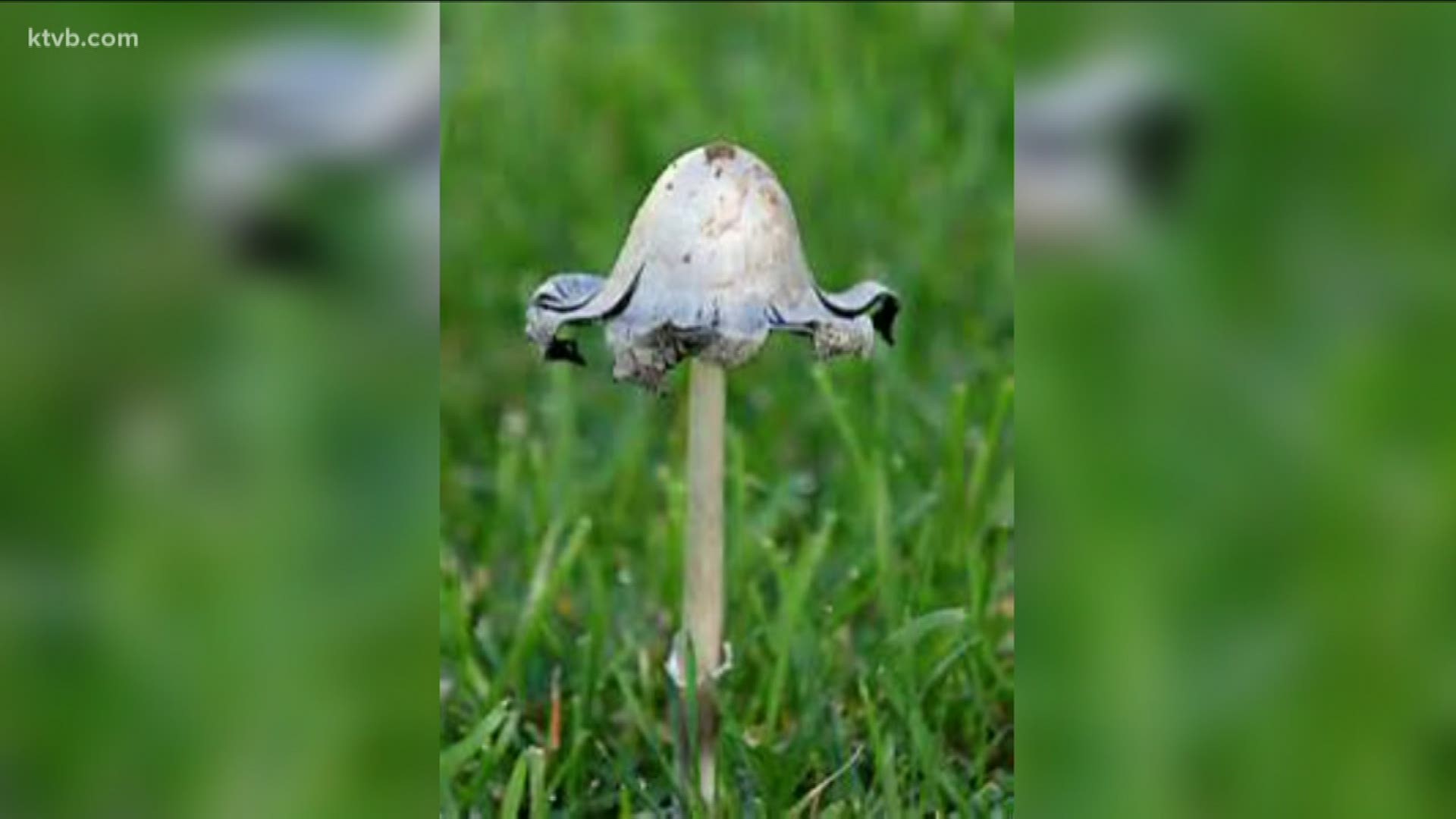BOISE, Idaho — Just a week ago we were dealing with cool, wet weather, and now we're hot and dry with temperatures pushing 100 degrees.
These weather extremes, along with watering our lawns more, has set up the perfect mushroom-growing conditions for our lawns.
What we call mushrooms are actually the fruit of a beneficial fungus that is in the soil. By the time we see them, the fungus is already established underground. When conditions are right - usually moist and cool - the fungus shoots up its version of a flower full of spores, which can be carried by the wind, animals, and even on our shoes and lawnmowers.
Mushrooms won't hurt your grass. In fact, they can actually be beneficial to your lawn. Their extensive root systems help hold water, and they help to break down organic materials and add nutrients to your grass.
But they can be a little unsightly in the middle of a nice green lawn. Most of these mushrooms, or toadstools as we sometimes call them, aren't the kind we'd want to eat, but if you're concerned about your pets or small children being around them, it's not hard to keep them under control.
You can eliminate the visible mushrooms by knocking them over, raking or even mowing them. but that may tend to spread the spores around and lead to more mushrooms growing. Instead, just pull them up and throw them away. You might want to put them in a bag in the trash, not in a compost pile where the spores can spread. Be sure to wash your hands after handling them.
The best way to prevent mushroom growth is to starve them. Reduce the amount of water that is making the area damp, or provide more drainage. Aerating and dethatching the soil will help.
Rake up leaves, grass clippings, animal waste and other organic material that may decompose and feed the mushrooms. Check for buried pieces of wood or dead roots, and mow your lawn regularly. Shorter grass dries out faster than tall grass, reducing the moisture that the mushrooms need to grow.
Applying a nitrogen-rich fertilizer on your lawn speeds up the decomposition of organic material that the mushrooms feed on. And while commercial fungicides may kill the mushrooms, they don't get down into the soil to kill the fungus that produces the mushrooms.
The bottom line is that mushrooms won't harm your lawn, although they're not very pretty to look at.
And speaking of watering your lawn, how do you know if you're watering too much or too little?
It depends on where you live. If you're near the Boise River or along the foothills, you probably have sandier soil and may need more water to keep the roots moist. Out in the valley, or along the Boise Bench, the soil is mainly composed of clay and can become hard-packed if it dries out, or soggy if it gets too wet.
Most of us tend to over-water. If your lawn is soft and squishy when you walk on it, or if water is running into the gutter, you're probably watering too much.
But if the grass doesn't bounce back, and it shows your footprints or is a dull blue-gray color, then you probably need to give it more water.
Avoid watering every day. It wastes water and doesn't allow the grass to develop deep, healthy roots, which helps it to better withstand periods of hot, dry weather.
Most lawns need about an inch-and-a-half to two inches of water per week. You can measure the amount of water your lawn is getting by setting out a simple, inexpensive rain gauge.
Another option is to place shallow containers, like tuna cans or yogurt cups, in different areas of the lawn. Run your sprinklers, then measure the water with a ruler.
I tested this idea out on my own lawn. The cups I used had about a half-inch of water in them after 20 minutes. So if I water every other day, I'll have about two inches in a week, which is just about right.
Adjust your sprinkler system's watering times and frequency to provide the right amount of water. During very hot, dry periods, you might water twice in one day for shorter periods of time.
There are always challenges to keeping your lawn lush and green, but by watering properly, it will look better, and you'll save valuable water resources, as well.
Watch more 'Growing Idaho':
See the latest growth and development news in our YouTube playlist:

